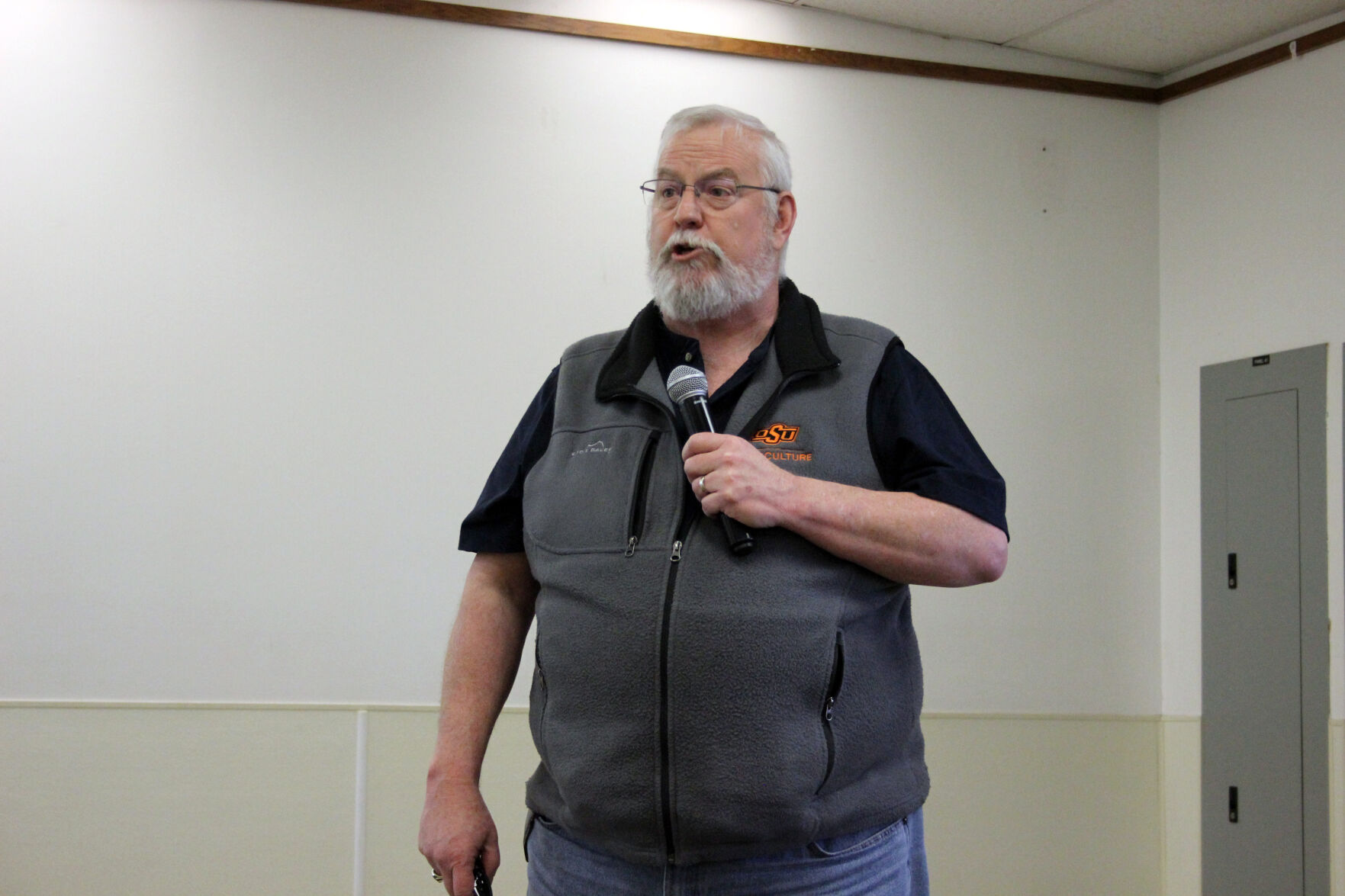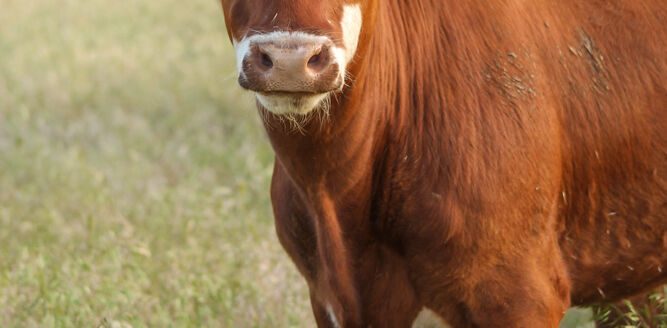With the effects of a multi-year drought and lingering consequences of the COVID-19 pandemic, cattle markets are faced with a shrunken herd, high feed prices and low beef production in the future. Oklahoma Cooperative Extension livestock marketing specialist Derrell Peel said producers should expect years of rebuilding to return the industry to its pre-pandemic state.
Peel spoke about the 2023 market outlook and beyond at the Central Oklahoma Cattle Conference held in Stillwater, Oklahoma, on Feb. 10. The top 10 list of states with the most cattle has not changed in rankings, Texas is still No. 1; however, the overall number of cattle has dropped sharply. Peel said Oklahoma, which is currently No. 5 on the list, lost 11% of its cattle last year—more cattle than any other state on a year-over-year basis.
For beef cows, Texas still holds down the No. 1 spot by a long shot, Oklahoma sits in second, then Missouri, Nebraska, South Dakota, Kansas, Montana, Kentucky, Florida, and North Dakota. For beef heifer numbers, Texas remains the leader, with Oklahoma in the No. 2 position, followed by South Dakota, Nebraska, Montana, Kansas, North Dakota, Wyoming, and Colorado.
Peel said when we look back at the past 10 years of all cattle inventory trends, the numbers bottomed out in 2014 because of the last drought, then peaked in 2019. Over the last two years the decline has accelerated due to drought. Beef production and cattle numbers are tied together on a string and usually production bottoms out a year after cattle numbers hit a low.
“The calf crop actually peaked in 2018, so we’ve been getting smaller as far as the number of calves in this country and we’re really starting to see some of that come home to roost,” Peel explained. “The Jan. 1 beef cow inventory was a few thousand head lower than the 2014 number, which means you have to go back to 1962 to find a beef cow herd as small as we have right now. The heifer numbers peaked in 2017 in the midst of the last expansion.”
Peel said the heifer inventory is broken into two parts: heifers that will calve this year and heifers in development that will calve next year. He said the bred heifers are down 5.1% and the heifer calves are down nearly 7%.
“Bottom line, we don’t have many heifers to work with. If conditions improve and we start thinking about rebuilding it will be a slow process,” he said.
Peel said cattle on feed numbers are down about 3% and will continue to tighten up. One concerning statistic is that heifers made up 39.8% of all the cattle in feedlots. That was the highest level since 2001. Furthermore, 51.4% of all the cattle slaughtered in the U.S. were females.
“That has not happened since 1986 and it’s only happened a handful of times ever,” Peel said. “We have really liquidated a lot of the female part of our industry and what squeezes production the most is female retention, which will happen in 2023.”
Production will decrease
“Beef production in 2022 was at a record high of 28,290 million pounds produced, but it was built on liquidation of inventories,” Peel explained. “When we’re forced or choose to get smaller, you eat inventory on your way to smaller numbers. That’s not sustainable and, in this case, we didn’t want to do that but we haven’t had any choice the last couple years.”
Peel said the high production will fall off in 2023 with lower numbers of cattle as producers start to rebuild.
“For 2023, our expectation is a 4 to 5% decrease built in right now. Frankly, that’s probably the minimal for 2023. We’re going to see a sharp decrease, and it could be sharper than this and it will be down for the next two to three years at least. With beef declining that much, total meat supplies or production in the U.S. will go down this year for the first time in seven years.”
Cattle prices have been trending up since the lows of 2020 and he expects prices to remain high in 2023.
“There was a lot of pent up demand coming out of the pandemic,” he said. “Restaurants were closed, people hadn’t been traveling, they had money and they wanted to spend it. Beef was one of the items they purchased.”
Peel said 2022 prices were still at a relatively high level, but the pattern was the flattest seasonal pattern he’d ever seen for wholesale beef. He said there are some challenges as to how the beef demand is playing out, but the bottom line is it is still strong. Additionally, beef consumption has been climbing higher the last few years as beef production increased. Peel expects consumption to drop in 2023, 2024, and perhaps even beyond that.
“Lower beef consumption per capita does not mean beef demand is getting weaker,” he explained. “We’re going to eat less beef this year because we’re going to produce less beef. Per capita consumption by itself is just a measure of supply. Expect prices to go higher.”
Drought expectations and high feed costs
Although drought conditions have improved over the last couple months, there is still significant drought in the western half of the country. Peel said looking back to the summer of 2011, the drought was extremely severe, but the difference from then and now was it was more contained regionally.
“It was a pretty big region, especially relative to number of cows, but it didn’t affect as much of the country at that point in time as it has now,” he said.
Peel expects the first half of 2023 to be more of the same with dry conditions, but after that things should improve. However, he expects a relatively tough forage year due to dry conditions early on.
“We’re starting off in a big hole,” he said. “According to a data series from USDA that goes back to the mid-1970s, last year’s hay production was the lowest ever. Dec. 1 hay stocks coming into winter were also record low and hay prices have been at record high levels. There is really no place to go for any alternative feeds.”
The high feed costs have created challenges for feedlots as well.
“If you go back to the beginning of 2021, feedlot cost of gain was around 80 cents for steers,” Peel said. “By the end of the year it was about a $1.10. Last year it continued to work its way higher and now it’s closer to $1.40 for steers. It’s pretty expensive and there’s no real relief in sight. From that standpoint feedlots have a lot of challenges with cost of gain and increasingly they’re going to have issues related to availability of cattle for the next two to four years.”
Tough times are guaranteed for cattle producers going forward, but since there is a light at the end of the tunnel as far as the drought, cattlemen and women should be encouraged. The cattle herd can be rebuilt, it just takes time and patience.
Lacey Vilhauer can be reached at 620-227-1871 or [email protected].




